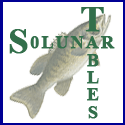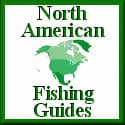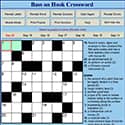Bass on Hook is Supported by our readers. As an Amazon Associate We earn commissions from qualifying purchases. For more informtion read our Amazon Affiliate Disclosure and Affiliate Disclosure Policies.
What To Do When It Goes Bad - Part 2 of 4
(Murphy's Law Re-Defined)
By Dennis Bryant "The Fishing Professor"
"Learning What Makes A Spinnerbait Or Buzzbait Work And Why"
Spinnerbaits & Buzzbaits work their "magic" by causing "reflex strikes" from fish that are attracted to the flash and vibration given off by the blade(s) attached to the lure.
In clearer waters, color adds considerably to the attraction.
As does Size, Shape, Presentation and Location.
The fish feel, see or hear an intruder in their area and simply attack the lure being presented to get it out of their domain.
Let's face it!
The overall shape of most spinnerbaits and buzzbaits do not resemble any known food source of any fish in nature!
They just plain get mad at it and want it out of there!
Spinnerbaits that are made to resemble minnows etc. are primarily intended to catch fishermen rather than fish!
The minnow shaped & colored heads offered for sale on spinnerbaits and buzzbaits would be better suited to the making of a jig, jerkbait or crankbait, than a spinnerbait or buzzbait.
Where Should You Use Spinnerbaits or Buzzbaits
Spinnerbaits and buzzbaits are intended to go places that most other lures can't.
IN THE JUNK!
Or to be used as a "search-lure" to cover larger amounts of water quickly!
Their form should be intended to follow those functions.
Unless a spinnerbait or buzzbait is normally used strictly for 'helicoptering' at drops and ledges, the minnow-shape & look-alike coloring of some lures on the market is totally wasted on the quarry until the fish is within 12" of the lure.
But that's the purpose of a soft-jerkbait or a jig!
Not a Spinnerbait or Buzzbait!
A spinnerbait should be made to go through weeds, brush, grass, timber and every other kind of imaginable slop that it could possibly come in contact with.
While going through all that JUNK, it's supposed to protect itself from snags (not from fish), attract fish by sending out vibrations through the water and make itself visible to the fish at a distance.
It does that by its physical structure, coloring and a balanced combination of body-weight, drag and blade(s) combination.
In order to obtain a balanced unit to fish with, the combination should have blade(s) that balance with the body weight, skirting etc. (that act as drag) to present the hook in an upright manner with the point of the hook directly inline with the attached line drawing it through the water.
The intent is to offer the hook in this attack position to insure consistent insertion in the upper jaw of the quarry without the "blade-arm" acting as a "weed-guard" and preventing or diminishing the purpose.
To Summarize Learning What Makes A Spinnerbait Or Buzzbait Work And Why:
Big Blade combinations require heavy wire and an even heavier body to act as a balanced unit.
Smaller Blade combinations allow lighter wire to be used.
And combine with a lighter weight head to produce their balance.
The shorter the balanced arms are the faster the bait can be fished.
The longer the balanced arms are the slower the bait can be fished.
The blades attached to the arm, perform two functions: flash & vibration.
Thin blades(e.g.: Willow & Indiana style) allow less drag and less fouling (best for fishing grasses and thick weeds).
Wider blades (e.g.: Colorado & Magnum style) cause more drag, thereby providing more vibration (best for open water situations).
Lighter wire combined with smaller blades and heads can be effectively used to provide as much and sometimes more vibration than heavy wire with big blades and heads.
That's when the targeted fishing depth then becomes the determining factor of weight and blade usage.
WOW! How's that for "tech-talk"?
Almost Verbatum from the copyrights!
Confused yet?
No?
Good!
Nuff said!
Next time, let's get on with the basics of balancing and repairing spinnerbaits & buzzbaits on the water!
Stay Tuned For The Next Episode: "Quick, Basic Repairs To Do Before You Hit The Water" (With Simple Tools Usually At Hand)
GOOD FISHIN'!
Dennis Bryant
The Fishing Professor
Look for other articles written by Dennis Bryant in The Fishin Professor's Pro Staff Angler Profile










